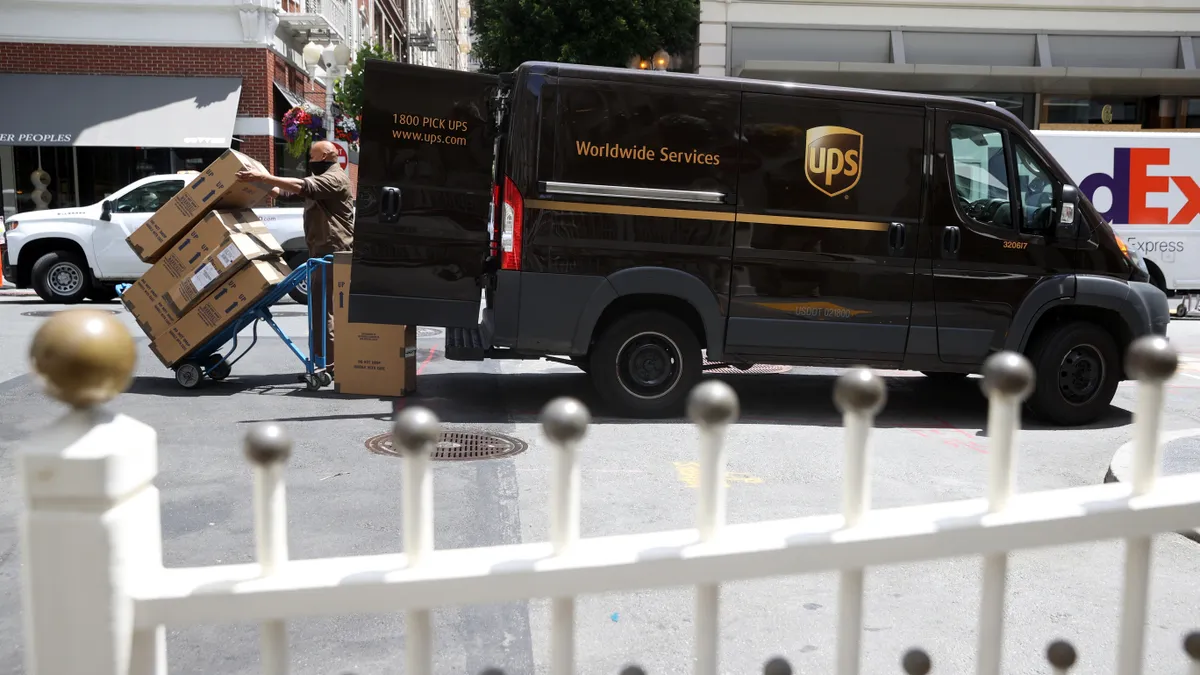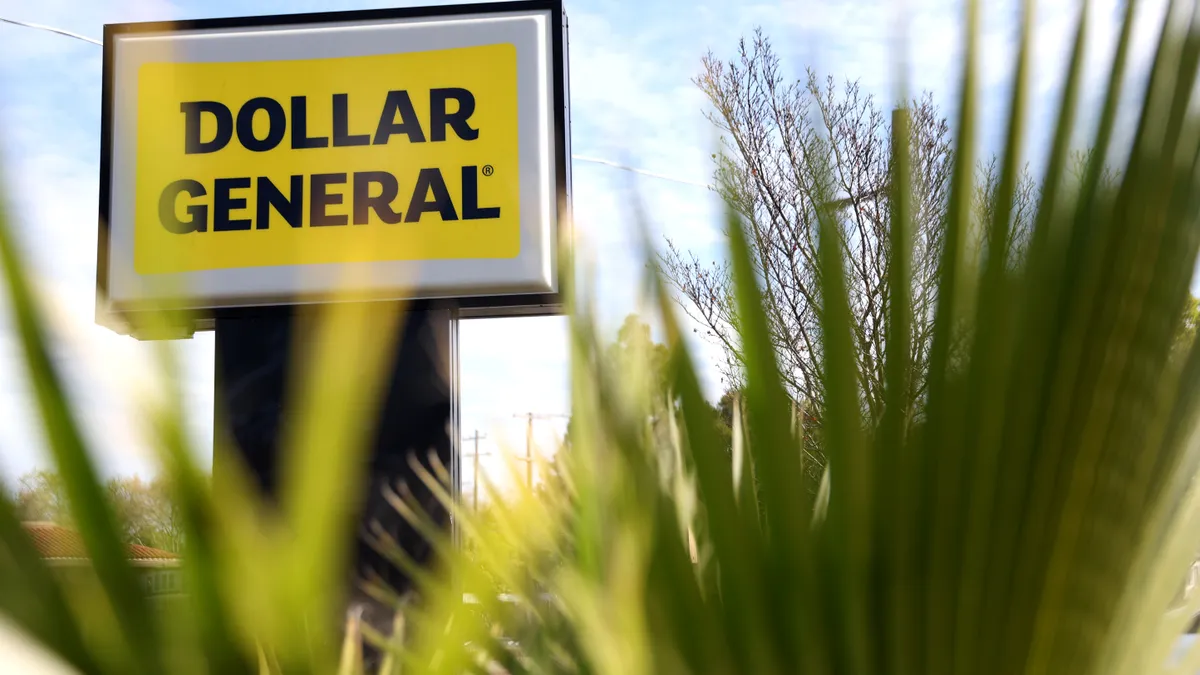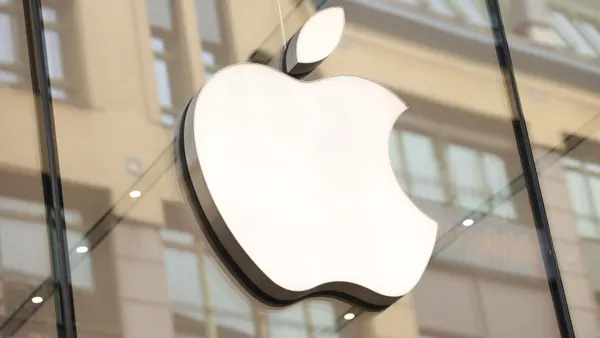Dive Brief:
- UPS announced increases to surcharges on several domestic shipments, citing the need to maintain service as logistics demand has increased.
- Starting July 4, additional handling surcharges will rise from $3 to $3.50 per package, and large package surcharges will rise from $31.45 to $40. Beginning Oct. 3, those fees rise to $6 for additional handling and $60 for large parcels through Jan. 15, 2022.
- Surcharges for Air Residential, Ground Residential and SurePost will also go up, starting Oct. 31. Increases depend on the amount of volume compared to a February 2020 benchmark and range from $1.15 to $6.15 per package. They apply to customers who shipped more than 25,000 parcels during any week following February 2020.
Dive Insight:
Peak season 2021 is shaping up to look a lot like 2020 — but even more expensive for many shippers.
Last year's surcharges for Air, Ground and SurePost ranged between $1 and $4 per parcel, depending on the volume against a February 2020 benchmark. Those fees are as high as $6.15 this year. Large parcel surcharges increased to $50 last October and will be $60 this October.
The peak surcharges for 2021 particularly affect high-volume shippers and those who've experienced substantial demand growth over the last year.
In peak season 2020, UPS segmented shippers into three categories for those that shipped more than 25,000 parcels weekly during peak:
- Shippers who sent 110% to 200% of their February 2020 volume
- Shippers who sent more than 200% to 300% of their February 2020 volume
- Shippers who sent more than 300% of their February 2020 volume
But this year, there are five tiers, and the surcharges tick up in line with the volume. SurePost and Ground Residential surcharges are $5.15 per package, and Air Residential is $6.15, for shippers with volumes more than 500% above last February. And such an increase in volume is not unheard of, as retail and e-commerce sales have boomed, and supply chains attempt to build up inventory to keep pace with demand.
UPS peak surcharges, Oct. 31, 2021 to Jan. 15, 2022
| 110% to 200% of Feb 2020 volume | More than 200% to 300% | More than 300% to 400% | More than 400% to 500% | More than 500% | |
|---|---|---|---|---|---|
| SurePost | $1.15 per package | $2.15 | $3.15 | $4.15 | $5.15 |
| Ground Residential | $1.15 | $2.15 | $3.15 | $4.15 | $5.15 |
| Next Day Air Residential | $2.15 | $3.15 | $4.15 | $5.15 | $6.15 |
| All Other Air Residential | $2.15 | $3.15 | $4.15 | $5.15 | $6.15 |
Source: UPS
UPS' latest surcharge announcement follows FedEx's increases for Express and Ground shipments beginning June 21.
The pattern of continuously piled-on surcharges has been ongoing for more than a year and has frustrated many stakeholders in the parcel industry.
"If 'peak' is year around, is it really peak?" Scott Ruffin, founder and CEO at Pandion, wrote in a LinkedIn comment.
Surcharges and volume caps from the logistics duopoly last peak drove shippers to seek alternatives, in some cases regional parcel carriers.
"I've never seen shippers so angry. It's almost visceral," said Richard Metzler, president and CEO of LSO, a regional carrier based in Texas.
Shippers understood that volume was overwhelming UPS' and FedEx's networks and prices needed to adjust accordingly, Metzler said. "But a lot of it was how they did it, that they gave them short notices to find alternatives to move their parcels with customers who had been with them a long time and did it rather harshly."
It may be too early in the year for UPS or FedEx to begin capping volume, but the high surcharges could effectively price out shippers and cull volume out of the network. It's a strategy that fits with UPS CEO Carol Tomé's mantra of "better, not bigger" and the logistics provider's focus on small- to medium-sized businesses and high margin shipments.
UPS says the surcharges are essential to keep up service in times of high demand. The company's on-time performance has returned to pre-pandemic levels, according to data from Convey. In May, on-time performance was 89% (FedEx's was 71%).
At UPS' investor day conference earlier this month, executives indicated surcharges are a strategy they will continue to pursue.
"We will continue to apply demand surcharges for as long as the market conditions warrant," CFO Brian Newman said. "We expect demand surcharges to moderate in 2022."














